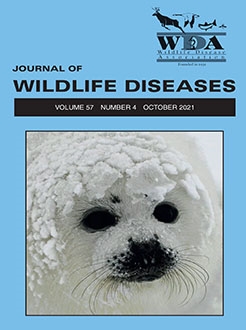Passive surveillance is an important component of wildlife health surveillance that allows for the identification of emerging pathogens as well as population-level threats. We investigated the most common causes of morbidity and mortality in rodents and lagomorphs submitted to the Canadian Wildlife Health Cooperative (CWHC) in Ontario and the Ontario Veterinary College (OVC) over a 30-yr period. A total of 836 cases representing 13 species of rodents and three species of lagomorph were submitted to the CWHC and the OVC wildlife pathology service. Infectious or inflammatory diagnoses were most common in our data set, followed by trauma and unknown diagnoses. The most frequently identified primary diagnosis was encephalitis with histological lesions consistent with neural larva migrans including the presence of inflammation and malacia of brain tissue and, in some cases, characteristic nematode larvae. Other infectious diagnoses were squirrel fibroma virus and Toxoplasma gondii infections. Knowledge of common pathogens observed in various species of rodents and lagomorphs can aid in triage and treatment decisions at veterinary clinics and wildlife rehabilitation centers, and guide sample collection and test requisition at post-mortem examination.
How to translate text using browser tools
11 October 2021
MORBIDITY AND MORTALITY IN ONTARIO RODENTS AND LAGOMORPHS: A 30-YEAR RETROSPECTIVE REVIEW
Shannon K. French,
David L. Pearl,
Brian Stevens,
Andrew S. Peregrine,
Claire M. Jardine
ACCESS THE FULL ARTICLE

Journal of Wildlife Diseases
Vol. 57 • No. 4
October 2021
Vol. 57 • No. 4
October 2021
infectious disease
morbidity
mortality
neural larva migrans
Ontario
rabbit
retrospective




